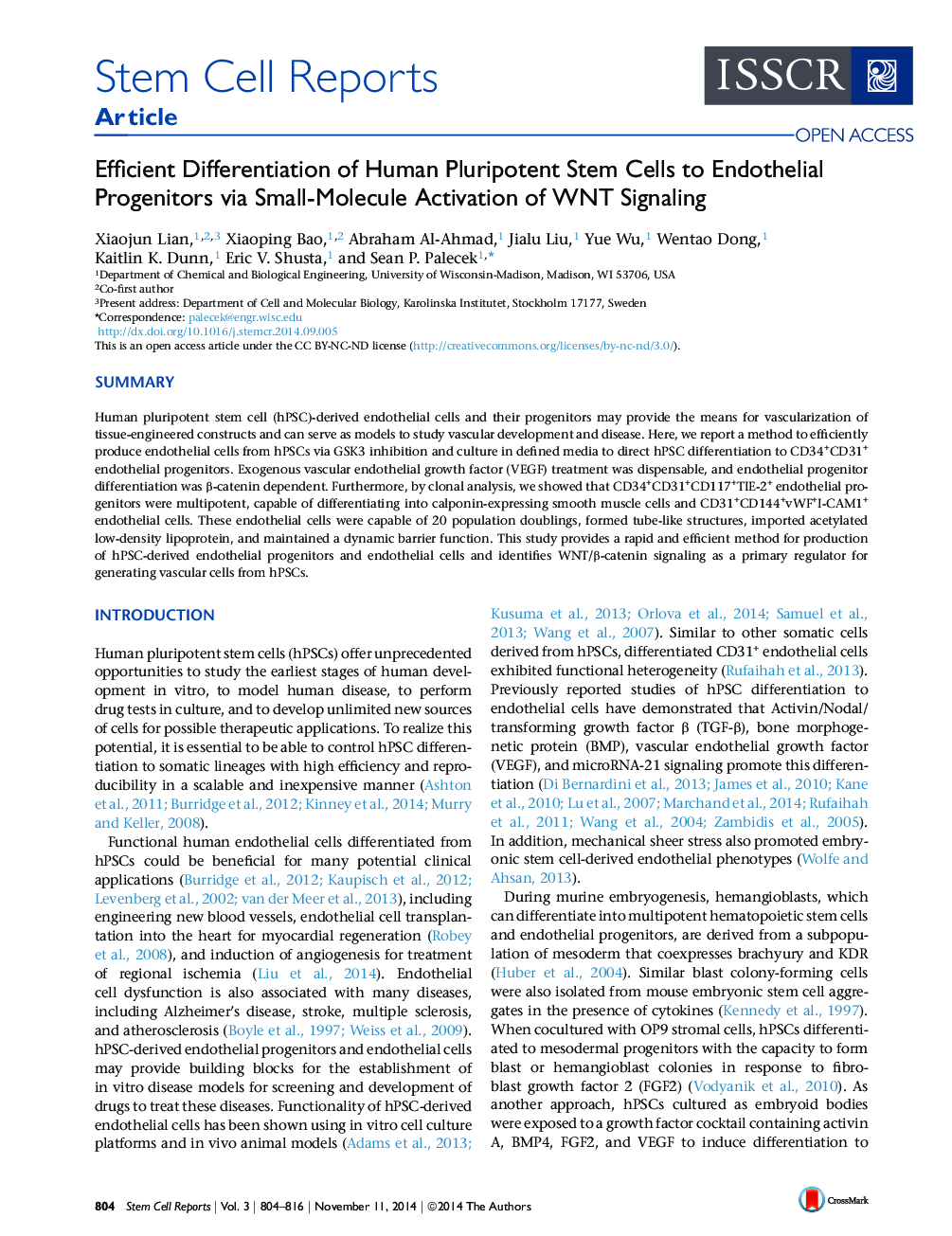| Article ID | Journal | Published Year | Pages | File Type |
|---|---|---|---|---|
| 2093329 | Stem Cell Reports | 2014 | 13 Pages |
•WNT pathway activation directs hPSC differentiation to endothelial progenitors•hPSC-derived endothelial progenitors can differentiate to endothelial cells•Purified hPSC-derived endothelial cells are capable of 20 population doublings•WNT pathway activation permits defined production of endothelial cells from hPSCs
SummaryHuman pluripotent stem cell (hPSC)-derived endothelial cells and their progenitors may provide the means for vascularization of tissue-engineered constructs and can serve as models to study vascular development and disease. Here, we report a method to efficiently produce endothelial cells from hPSCs via GSK3 inhibition and culture in defined media to direct hPSC differentiation to CD34+CD31+ endothelial progenitors. Exogenous vascular endothelial growth factor (VEGF) treatment was dispensable, and endothelial progenitor differentiation was β-catenin dependent. Furthermore, by clonal analysis, we showed that CD34+CD31+CD117+TIE-2+ endothelial progenitors were multipotent, capable of differentiating into calponin-expressing smooth muscle cells and CD31+CD144+vWF+I-CAM1+ endothelial cells. These endothelial cells were capable of 20 population doublings, formed tube-like structures, imported acetylated low-density lipoprotein, and maintained a dynamic barrier function. This study provides a rapid and efficient method for production of hPSC-derived endothelial progenitors and endothelial cells and identifies WNT/β-catenin signaling as a primary regulator for generating vascular cells from hPSCs.
Graphical AbstractFigure optionsDownload full-size imageDownload as PowerPoint slide
